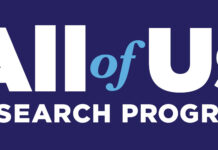ASHA Stresses Effectiveness of Early Intervention for Communication Disorders
ROCKVILLE, Md., May 1, 2023 /PRNewswire-HISPANIC PR WIRE/ — A new national poll of audiologists and speech-language pathologists who work with children ages birth to 5 years reveals that most respondents have experienced an increase in referrals for concerns about hearing, speech, and language delays or disorders over the past 2 years—a time marked by pandemic-related transformations in the lives of many young children. The poll was conducted by the American Speech-Language-Hearing Association (ASHA), which is releasing its results today as Better Hearing and Speech Month begins.
Experience the full interactive Multichannel News Release here: https://www.multivu.com/players/English/9121551-asha-poll-shows-hearing-speech-language-referral-increases-more-communication-challenges-in-young-children/
“In addition to more requests for evaluations, our members have seen an increasing number of children with behavioral, social, and language difficulties—as well as more children with hearing loss that has gone undetected,” said 2023 ASHA President Robert Augustine, PhD, CCC-SLP. “However, we want to assure families that if they have concerns about their child’s communication skills, help at any stage can be extremely effective—and they should seek an evaluation as soon as possible.”
Fielded this past winter, the poll of roughly 1,000 ASHA member audiologists and speech-language pathologists shows that backlogs of children who weren’t referred to them during stay-at-home periods, or whose families waited to seek help due to concerns about virus exposure, are a major factor in the increase. Three-quarters (75%) of audiologists and 62% of speech-language pathologists reported such backlogs. Other pandemic-related trends that these professionals report include the following:
- Among audiologists, 34% report seeing more children with a delayed diagnosis of hearing loss, and 36% report more children with untreated (persistent) ear infections that could interfere with communication development, compared with before the pandemic.
- Among speech-language pathologists, 84% report more children with emotional or behavioral difficulties, 79% report more children with delayed language or diagnosed language disorders, and 78% report more children with social communication difficulties than before the pandemic.
- When it comes to factors contributing to increases in referrals beyond backlogs, audiologists and speech-language pathologists point to limited opportunities for social interaction and play with peers (59%); limited formal pre-K and daycare or interaction with outside adults (57%) such as child care providers, preschool teachers, and extended family; and young children (51%) spending more time using screens and technology such as tablets and smartphones compared with pre-pandemic years.
Continued Need for Early Identification, Intervention
The findings come as ASHA’s Identify the Signs public education campaign, which informs families of the early signs of communication disorders and the benefits of early intervention, marks its 10th anniversary. The audiologists and speech-language pathologists who were polled reported progress in this regard: 67% said parental awareness of the early warning signs of communication disorders has improved during the past decade. A majority (71%) said that most families with young children are at least “somewhat” aware of the importance of early detection of speech, language, and hearing difficulties when families first see them.
However, much room for improvement remains. ASHA’s poll also found the following:
- Lack of awareness of the early signs of disorders remains the leading factor hindering parents and caregivers from taking action on communication disorders in young children.
- Less than one quarter (21%) of audiologists say that most parents know the early warning signs of hearing disorders—and only 28% of speech-language pathologists say that most parents know the early warning signs of speech-language disorders.
- About 40% of audiologists indicated that, on average, symptoms of hearing loss in young children go unrecognized by parents/caregivers for 6 months to 1 year. About 41% of speech-language pathologists indicated that, on average, symptoms of a speech-language delay or disorder in young children go unrecognized by parents/caregivers for 1–2 years.
- Even after noticing signs, families often delay seeking help. Nearly half (48%) of audiologists indicated that, on average, parents/caregivers wait 6 months to 1 year after observing symptoms of hearing loss in their children before acting. The same percentage (48%) of speech-language pathologists indicated that, on average, parents/caregivers wait 6 months to 1 year after observing symptoms of a speech-language delay or disorder to get help.
According to Augustine: “It’s important for parents to be aware of the signs, and to really trust their intuition and seek out an evaluation from a certified audiologist or speech-language pathologist, should they have questions. The earlier we are able to intervene, the more successful the outcomes generally are for children.”
What Families Can Do
ASHA recommends that families do the following:
Learn the signs of communication disorders. Families can visit the Identify the Signs website to see signs of disorders by age.
Connect with early intervention or a private clinician if you have concerns. Families don’t need a referral from a pediatrician to connect with their early intervention program. Find contacts by state at this link: https://www.cdc.gov/ncbddd/actearly/parents/states.html. Access a searchable database of private providers at www.asha.org/profind.
Focus on daily interactions with your child. Talking, singing, playing, and reading books together are simple yet immensely effective ways to boost communication and social skills. These activities actually build a child’s brain. Birth to 3 years is a time when the brain is most adaptable, but these activities are crucial beyond that period. Limit recreational screen time when possible.
Visit www.IdentifytheSigns.org to learn more about communication disorders.
Media Contact:
Francine Pierson
FPierson@asha.org
SOURCE American Speech-Language-Hearing Association





